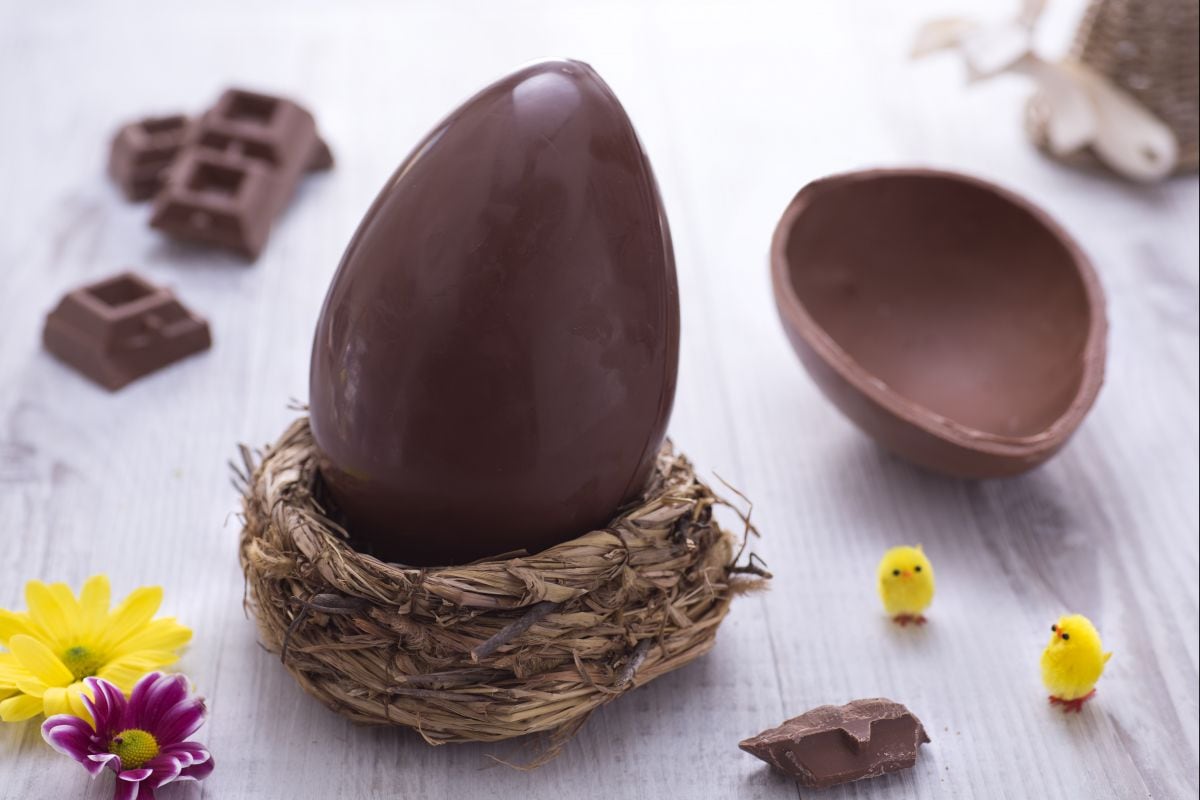Milk chocolate and hazelnut Easter egg
- Very difficult
- 1 h 5 min
- Kcal 175

Milk chocolate Easter egg traditions are, I gotta say, super strong in Italy, especially when springtime rolls around and families gather. These big, shiny eggs? They're more than just Easter egg chocolate; they’re pretty much the star of Easter baskets and really bring some serious excitement to the table.
You know, getting that glossy finish on a milk chocolate Easter egg is about careful tempering, just like the pros do it. And look, you can really, really feel the difference: the chocolate shell comes out crisp and smooth, with that satisfying snap when it breaks open. What's truly special isn’t just the rich, sweet flavor—it’s the little surprise inside. Everyone’s waiting for it, right?
In Italian homes, slipping a tiny toy or message into the egg is a fun part of the process, and cracking the egg open? Always brings laughs and smiles. It is a tasty way to share joy with loved ones during the holiday. And here's the deal: gathering with family during Easter in Italy often revolves around this classic chocolate Easter egg.
Folks love comparing who snagged the biggest egg or who found the funniest surprise. It's like a mini Easter egg hunt right at the table. Plus, the eggs double as beautiful decorations—until it's finally time to break them apart. Some people even save the leftover chocolate for cakes or desserts, ensuring nothing goes to waste—just like Italian nonnas always say.
With that tender melt-in-your-mouth feel and the rich taste of good holiday chocolate, these eggs are always a hit. For sure. Kids and adults alike love the shiny, golden shells and the taste that just screams seasonal sweets. Adding fun, tradition, and a touch of practical kitchen know-how, milk chocolate Easter egg recipes really, really bring out the playful side of Italian food.
So, whether you're enjoying the creamy texture or discovering a surprise, these eggs are a true delight in any Italian celebration. Seriously good.
You might also like:

To prepare the milk chocolate Easter egg, chop the chocolate 1 and melt it in a double boiler (it's preferable that the water in the pot does not touch the bottom of the bowl containing the chocolate); measure the temperature with a kitchen thermometer 2 and when the chocolate reaches 113-122°F, pour 2/3 of it onto a marble slab placed on a work surface (the marble serves to cool the chocolate quickly and reach the appropriate temperature) 3

and start working on the slab with a spatula 4 and a scraper, spreading it over the surface. When it reaches 81°F 5, transfer it to the bowl where you left the remaining 1/3 and mix. The chocolate should reach 84°F 6. If in these steps the temperature drops too low, always keep the pot with warm water of the double boiler at hand to slightly heat the chocolate. Conversely, if it's still too hot, repeat the operation of spreading on marble with a small portion of the chocolate.

At this point, take the 7-inch mold and pour the melted chocolate into the two halves (7-8); rotate the mold to cover the edges with chocolate, then after 1 minute, turn it over onto a tray to collect the excess chocolate, lightly tapping the edges of the mold to remove air bubbles 9; collect the excess chocolate in a bowl. Let the chocolate solidify for about 10-15 minutes at room temperature.

Then, remove excess chocolate from the edges with a scraper to even them out 10, then pour the leftover chocolate back into the two halves 11 and rotate the mold to evenly distribute the second layer of chocolate. Let the chocolate crystallize in the mold for 2-3 hours (if the temperature exceeds 68°F, you can let it crystallize in the fridge). Then take the mold with the now solidified chocolate 12, turn it over to gently unmold the egg halves by applying slight pressure on the mold's shape.

Heat a wide pan of about 9 inches and then place it on the work surface, then place one half of the egg at a time with the edges touching the bottom 13; hold it for just a moment so they warm slightly, then insert the surprise and match the two halves 14. Hold it in place for a few minutes until the two halves are sealed, then your milk chocolate Easter egg is ready to be gifted and enjoyed on Easter day 15!